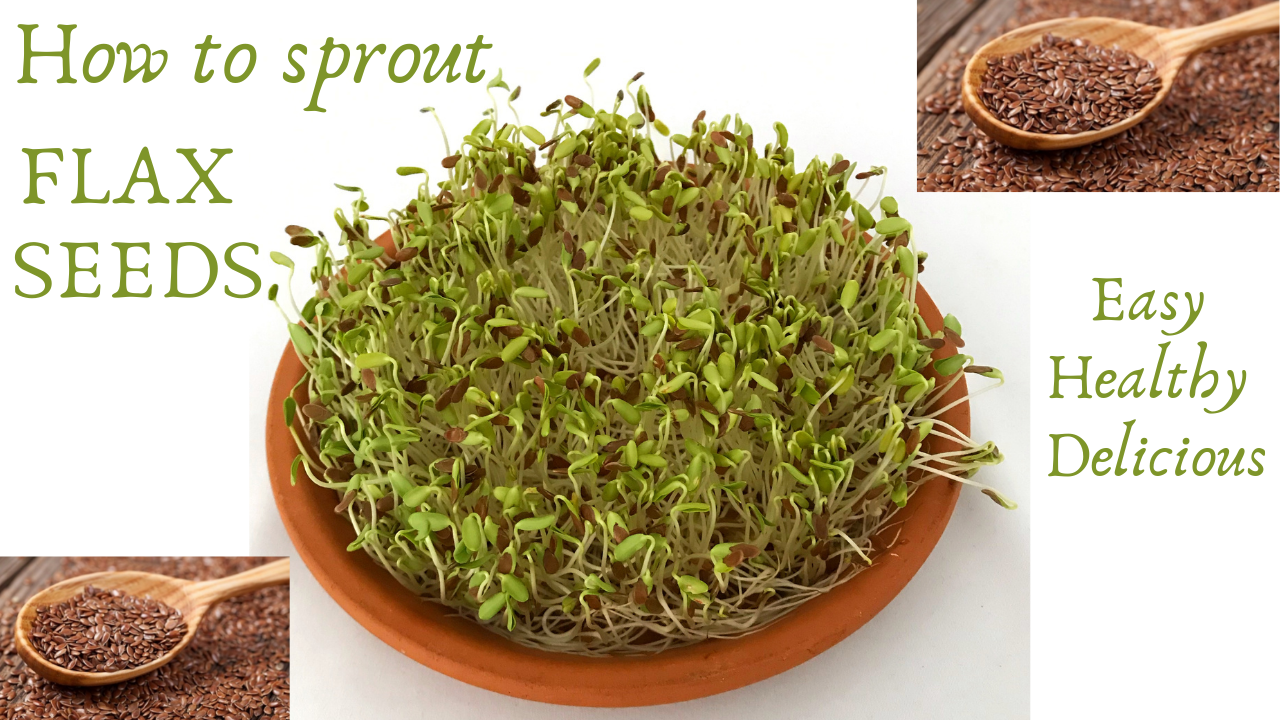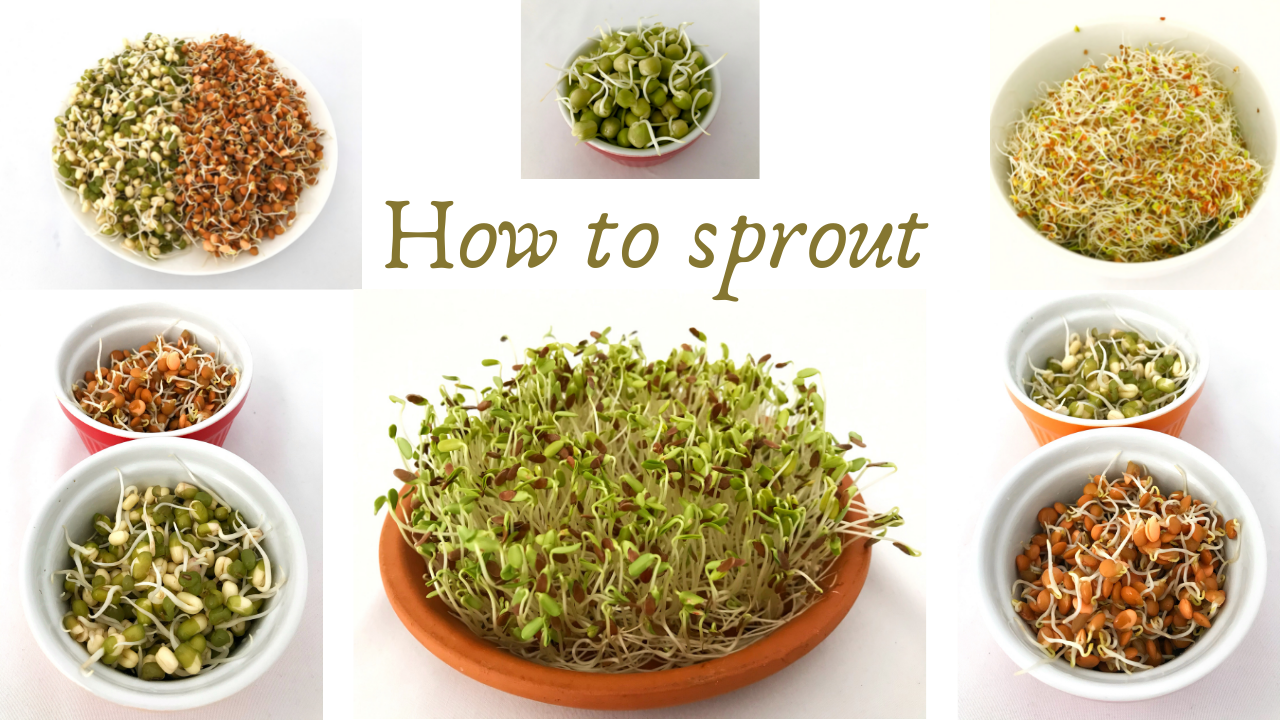How to sprout
I love growing sprouts because when it comes to growing our own food, it’s hard to find anything easier, quicker, or more nutritious than sprouts. I usually sprout mung beans, lentils, peas, alfalfa, broccoli, flax seeds.
Sprouts are easy and cheap to grow and, as locally grown vegetables, they offer additional environmental benefits by avoiding pesticides, food additives, and pollution from transportation.
Please watch my YouTube videos for easy instructions.
YouTube video - How to sprout mung beans and lentils
YouTube video - How to sprout alfalfa
Youtube video - How to sprout flax seeds
Let me know if you do sprouting and what you like sprouting.
Sprouts Nutrition
Sprouts offer a powerful source of vitamins, minerals, antioxidants, phytochemicals and enzymes that fight free radicals, as sprouting can increase their potency by 20x or more.
Seeds are amazingly concentrated sources of important nutrients in the first place. And the process of sprouting increases the amounts of nutrients they contain, making sprouted foods even richer sources of protein, folate, magnesium, phosphorus, manganese, and vitamins C and K than the same seeds before they’re sprouted. Note, however, that the nutritional value of sprouts tends to decrease when they’re heated.
🍀Because sprouts are oxygen dense, they protect the body against bacteria, viruses, and abnormal cell growth.
🍀Vitamins, such as A, B, C and E, and essential fatty acid nutrients increase in sprouting.
🍀In sprouting minerals bind to protein, making them more easily absorbed in the body.
🍀Sprouted seeds, grains, and legumes help support cell regeneration.
What Are Sprouts?
Sprouts are tiny germinated plants that have begun to grow from the seeds of vegetables, grains and beans. The germination process usually starts with soaking the seeds for several hours. Over time, shoots will start to grow out of the seeds. They can grow for 2 to 7 days and typically measure up to 2 (or more) inches (5 cm) long when ready to eat.
Types of Sprouts
Sprouts can come from many plants. Some of the most commonly found ones include those made from:
🍀Nuts and seeds, such as almond, radish, alfalfa, pumpkin and sunflower seeds
🍀Beans and peas, such as lentils, chickpeas, soybeans, mung beans, kidney beans, and green peas
🍀Grains, such as quinoa, oats, Kamut, amaranth, and brown rice
🍀Vegetables, such as broccoli, clovers,beets and mustard greens
Sprouts are different from microgreens. Most sprouts are grown with only water, sunlight, and air for inputs and are typically ready to eat within a matter of days. Microgreens, on the other hand, have edible leaves and stems and are typically grown in a soil mix or a fibre mat and take seven to 21 days of growth before harvest.
How to Grow Sprouts
It only requires a few minutes per day.
You can purchase seeds sold for sprouting or you can use dry beans or lentils from a grocery store.
I always use organic seeds.
Your sprouting kit or jar you use, should be thoroughly cleaned in between the sprouting.
I bought my sprouting kit but you don't need to if you don't want to. Use these materials instead:
Jar with lid
Plastic crafting screen or cheesecloth that you’ll cut with scissors
Rubber band
Sprouting:
🍀Add your seeds to your jar, cover with room temperature drinking water and screw on the jar lid. Swirl and rinse it few time thoroughly.
🍀Pour over the water and let it sit overnight or for at least eight hours, at room temperature. I always do this process in the evening and let my seeds sit in the water overnight. Keep them in a dark place. I usually place a cloth over them. Make sure they have enough air.
🍀The next day, drain the water from your seeds. Rinse them with fresh water, swirl them around, and then drain the water from them again. Repeat this process few times.
🍀Rest your jar upside down diagonally on a drying rack to keep water from pooling at the bottom of the jar. I keep my jars covered with cloth for 1-2 days. Just make sure they have enough air.
🍀Repeat the rinsing and swirling process twice daily (I do it in the morning and in the evening) until your sprouts grow to the size you like them. This usually takes between 2 - 7 days.
🍀When your sprouts form, rinse them one last time. Dry them gently with a clean cloth and transfer them to an airtight jar or container with a lid, instead of a sprouting screen. Store in the fridge for up to 3 - 5 days.
Sprouting flax seeds is slightly different (watch my Youtube video above)
You will need 2 trays (from plants) made from teracotta
Spray with water your seeds/sprouts 2x day in the morning and in the evening.
Keep them covered all the time.
When ready after 5-7 days place them in the light for a few hours but not in the direct sunlight. They will turn nicely green.
How to Store Sprouts
To maintain the freshness and quality of your sprouts for as long as possible, it’s essential to store them properly.
Sprouts will typically stay fresh in the fridge for around 5 days. But the sooner you eat them, the better. Store them in the airtight container in the fridge.
Strange odour:
Sprouts shouldn't have any odour. If you smell any strange odour, they are off and please discard them. Don't eat them.
Some of the best ways to enjoy sprouts:
I love putting my sprouts into my soups. I actually cant imagine my soup without sprouts anymore. I love it.
Sprinkled them on top of your soups and mains.
Add them to your salad, sandwich, bread, burritos.
Stir them in with the other veggies in stir-fries.
Add them to dips and hummus.
Eat them as a snack.
If you want to lose weight:
Effortlessly
Sustainably
healthily
Have a look at my Sustainable weight loss programme.
Please subscribe to my YouTube channel - Healthy lifestyle
Join my Facebook group Healthy lifestyle with Inkka about fitness, yoga, plant based lifestyle and meditations
Thank you very much
Wish you a wonderful day
Love 💕Inkka







